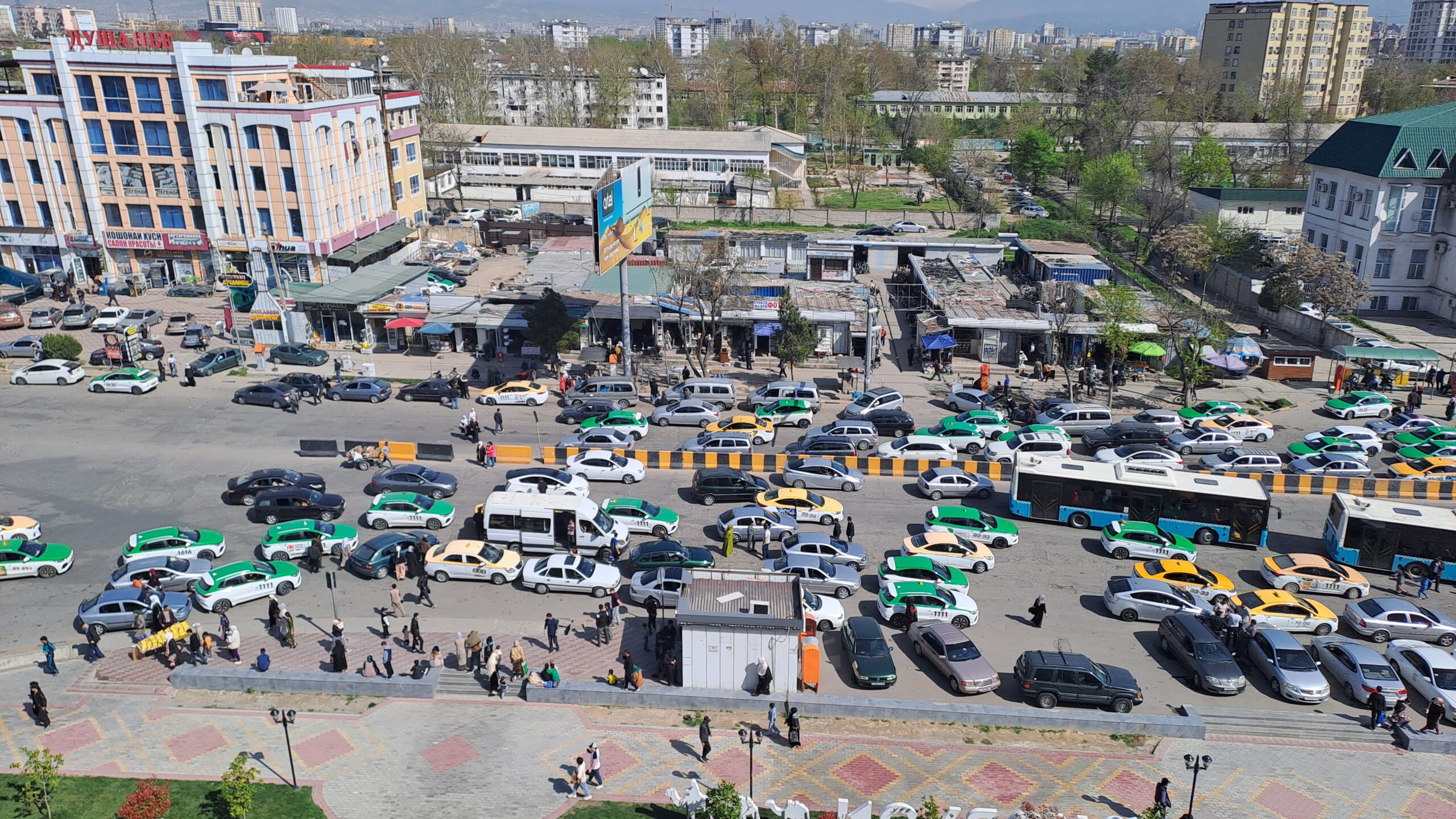Over the past 10 years in Tajikistan, the amount of harmful emissions has almost doubled. Transport is the main source of pollution. The experts believe it is necessary to develop a ‘green’ public transportation system.

The analysis of the Agency on Statistics of the Republic of Tajikistan data (for 2012-2022; data for 2023 has not yet been published) shows that harmful emissions into the atmosphere have increased by 1.8 times over 10 years.
During this period, the total volume of harmful emissions amounted to 4526 thousand tons. The main pollution sources are mobile, which account for 88% of total emissions, while stationary sources account for only 12%.
This means that the main air pollution source in Tajikistan is transport. The vehicles emit harmful gas – carbon monoxide – into the atmosphere, which is produced during incomplete burning of fuel.
It is notable that during the pandemic in 2019, harmful emissions from mobile sources decreased by 2.2 times. Most likely, this is a consequence of a decrease in traffic flow due to lockdown and other restrictions on movement.
What Pollutes Air and How?
Mobile sources of pollution include motor vehicles, trucks, buses, motorbikes, agricultural machinery, and other vehicles that emit exhaust gases that pollute the air. The bulk of emissions from these sources are carbon monoxide, hydrocarbons, and nitrogen oxides.
Stationary sources include industrial plants, power plants, factories, greenhouses, and other stationary facilities. These sources emit particulate matter, carbon monoxide, sulfur dioxide, and other substances into the atmosphere.
How Dangerous Are These Substances?
Emissions of harmful substances into the atmosphere cause serious damage to both the environment and human health. According to the World Health Organisation (WHO):
- carbon monoxide (CO) interferes with oxygen delivery to the body’s organs, which can lead to suffocation, dizziness, and deterioration of the cardiovascular system. Long-term exposure to CO may contribute to the development of heart disease;
- particulate matter (PM) can enter the lungs and bloodstream, causing heart disease, lung disease, and increasing the risk of lung cancer;
- sulfur dioxide (SO2) can irritate the eyes and respiratory tract, aggravate asthma and other respiratory system diseases;
- hydrocarbons and nitrogen oxides (NOx) cause the formation of ground-level ozone and smog, which worsens respiratory diseases and can lead to increased morbidity and mortality.
“Leaders” in Pollution among the Regions
Analysis of 2012-2022 data shows that the region of the country that pollutes the air the most is Sughd, which accounts for 36% of total emissions. The Districts of Republican Subordination are on second place (23%), followed by Khatlon region (22%), Dushanbe (18%), and GBAO (2%).
The share of pollution sources in the regions is distributed as follows:
Data shows that mobile sources of air pollution prevail in Sughd and Khatlon regions. GBAO stands out especially since there are no stationary sources of pollution. Meanwhile, in the Districts of Republican Subordination and Dushanbe, the share of stationary sources is higher than in other regions.
High emissions in certain regions are more likely to be associated with high population densities, heavy traffic, and industrial activity. Economic development of regions is often accompanied by an increase in the number of vehicles and industrial enterprises, which leads to an increase in air pollution.
Consequences of Increasing Emissions
According to environmental expert Timur Idrisov, air pollution has a detrimental effect not only on human health but also on the environment and agricultural activities.
“Air pollution can cause serious respiratory, cardiovascular, and other diseases. Thus, according to the World Bank research “Air Quality Management in Tajikistan”, the mortality rate due to air pollution in Tajikistan is estimated at 78 deaths per 100,000 inhabitants per year. According to these indicators, we are in the second highest place in Central Asia, after Uzbekistan,” says Idrisov.
He also notes that air pollution poses a serious threat to the environment.
“It leads to biodiversity loss, harms ecosystems, and affects glacial melting. This can also have a negative impact, for example, on agricultural crops, including a decrease in yield of crops,” the expert adds.
What Can Be Done to Improve the Situation
According to Timur Idrisov, to improve the situation, it is necessary to create an effective system for air quality monitoring by expanding the network of modern stations, creating a high-quality register of emissions, and regulating Maximum Allowable Concentrations (MACs) for key air pollutants in compliance with WHO recommendations.
“It is also necessary to develop specific plans for a phased reduction of both the total volume of emissions into the atmosphere and the most dangerous pollutants for each most polluting facility,” the expert adds.
To improve the environmental situation in the country, Idrisov also proposes launching an effective public transportation system, increasing the number of green areas in cities, switching to renewable energy sources, launching mandatory programs to improve energy efficiency, as well as organising separate collection and recycling of waste, and supporting environmental initiatives such as bicycle transport.
According to the expert, the transition to electric vehicles could potentially help reduce emissions into the atmosphere but it would be more effective to develop a ‘green’ public transportation system.
“Speaking of electric vehicles, we must remember how electricity is produced for them, how batteries are disposed and recycled, what kind of infrastructure exists, how it is maintained, etc.,” the expert notes.
According to Timur Idrisov, the transition to electric vehicles will not solve other transport problems, in particular, traffic jams, road safety, and the reduction of public space due to the construction of new parking lots.
He believes that one of the best ways to reduce emissions from transport is the development of clean, comfortable, and fast public transport and alternative forms of mobility, including bicycles.
“Transport solutions that allow people to move quickly and easily without a car are the key elements of a green city. Of course, public transportation should become ‘green’, for example, through the electrification of transport and the transition to alternative fuels,” the expert concluded.

